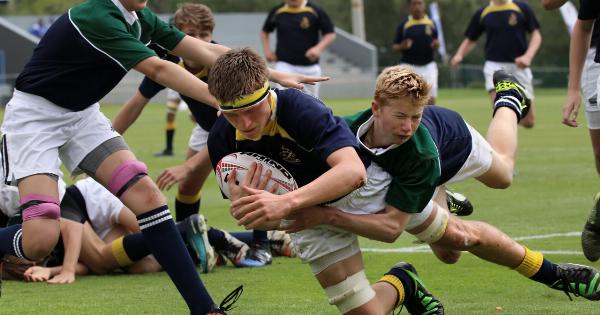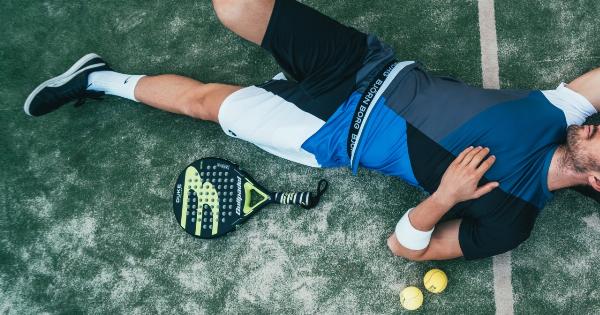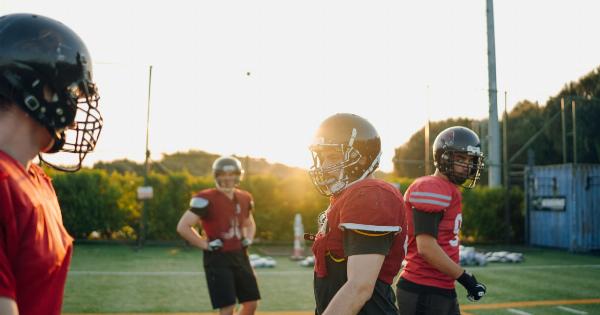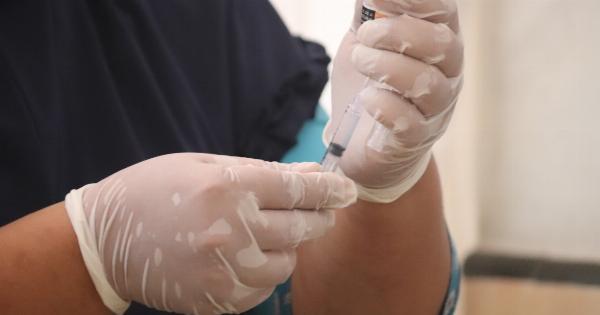Sports injuries can happen to anyone, regardless of their age or skill level.
Whether you are a professional athlete or just enjoy participating in physical activities for leisure, it is crucial to be aware of common sports injuries and know how to prevent them. In this article, we will discuss some of the most prevalent sports injuries and provide tips on recognizing and preventing them.
1. Sprained Ankle
Ankle sprains are one of the most common sports injuries, particularly in sports that involve sudden changes in direction or jumping. They occur when the ligaments that connect the bones in the ankle joint stretch or tear.
Symptoms of a sprained ankle include pain, swelling, and difficulty walking or bearing weight on the affected foot.
To prevent sprained ankles, athletes should wear appropriate footwear that provides good ankle support. Additionally, practicing exercises that improve balance and strengthen the muscles around the ankle can help prevent injury.
2. Shin Splints
Shin splints refer to pain and inflammation in the shins, typically caused by repetitive stress on the lower leg bones. Athletes involved in activities like running or jumping are more prone to developing this condition.
Symptoms of shin splints include a dull, aching pain along the inner edge of the shin bone.
Proper warm-up and cool-down routines, wearing appropriate footwear, and gradually increasing the intensity of activities can help prevent the occurrence of shin splints.
Strengthening exercises for the calf muscles and incorporating cross-training activities that reduce impact can also be beneficial.
3. Tennis Elbow
Tennis elbow, or lateral epicondylitis, is a condition characterized by pain and inflammation on the outer part of the elbow.
It commonly affects individuals who participate in activities involving repetitive arm motion, such as tennis, golf, or weightlifting. Symptoms of tennis elbow include pain and tenderness on the outside of the elbow, as well as weakness in the forearm.
To prevent tennis elbow, athletes should use proper equipment, such as well-fitted racquets or golf clubs with appropriate grip size.
Avoiding repetitive or excessive arm motions, maintaining good form and technique, and incorporating exercises that strengthen the forearm muscles can also reduce the risk of developing this injury.
4. Concussions
A concussion is a traumatic brain injury that occurs when the brain experiences rapid movement inside the skull. It is often caused by a blow to the head or violent shaking of the upper body.
Symptoms of a concussion may include headache, nausea, dizziness, confusion, and memory problems.
Preventing concussions involves using appropriate protective gear, such as helmets in contact sports like football or hockey. Athletes should also be educated on proper tackling or contact techniques to minimize the risk of head injuries.
Additionally, if a concussion is suspected, it is crucial to seek medical attention and allow sufficient time for recovery before returning to sports activities.
5. Runner’s Knee
Runner’s knee, or patellofemoral pain syndrome, is a condition characterized by pain around the kneecap. It commonly affects runners and individuals who engage in activities that involve repetitive knee movements, such as jumping or cycling.
Symptoms of runner’s knee include aching pain under or around the kneecap, particularly during activities like running downhill or descending stairs.
To prevent runner’s knee, athletes should engage in cross-training activities that strengthen the muscles around the knee.
Using appropriate footwear for running and ensuring proper running technique, such as avoiding overstriding, can also help prevent this injury.
6. Rotator Cuff Injury
The rotator cuff is a group of muscles and tendons that stabilize the shoulder joint. Rotator cuff injuries can occur due to repetitive overhead arm motions or sudden trauma. Symptoms include shoulder pain, weakness, and limited range of motion.
To prevent rotator cuff injuries, athletes should perform regular stretching and strengthening exercises that target the shoulder muscles.
Gradually increasing the intensity and duration of activities involving overhead arm movements can also help prevent this injury. It is important to maintain good posture and proper form during sports activities, especially in sports like swimming, baseball, or tennis that involve repeated overhead motions.
7. Hamstring Strain
Hamstring strains are common in sports that involve sprinting or sudden acceleration and deceleration, such as soccer, football, or track and field. They occur when the muscles or tendons at the back of the thigh get overstretched or torn.
Symptoms include sudden sharp pain in the back of the thigh, swelling, and difficulty walking or bending the knee.
To prevent hamstring strains, athletes should regularly engage in stretching exercises that target the hamstring muscles. Gradually increasing the intensity and duration of activities can help condition and strengthen the muscles.
Proper warm-up routines and adequate rest between high-intensity workouts or competitions are also crucial to prevent overuse injuries.
8. Stress Fractures
Stress fractures are tiny cracks in the bones that often occur due to repetitive impact or overuse. They commonly affect athletes involved in activities like running, gymnastics, or basketball.
Symptoms of a stress fracture include localized pain, tenderness, and swelling. The pain may worsen during weight-bearing activities and subside with rest.
To prevent stress fractures, athletes should gradually increase the intensity and duration of activities to allow the bones to adapt.
Ensuring proper nutrition and maintaining strong bone health through a balanced diet rich in calcium and vitamin D is also important. Using appropriate footwear and equipment that provides shock absorption can help minimize the risk of stress fractures.
9. ACL Tear
The anterior cruciate ligament (ACL) is one of the major ligaments in the knee that stabilizes the joint. ACL tears often occur during sports that involve pivoting, decelerating, or landing from a jump, such as soccer, basketball, or skiing.
Symptoms of an ACL tear include a popping sound or sensation in the knee, severe pain, swelling, and instability.
To prevent ACL tears, athletes should engage in regular strengthening exercises that target the muscles around the knee.
Proper technique and body mechanics during sports activities, such as using the correct landing position, can also help reduce the risk of ACL injuries. Wearing appropriate footwear and using braces or protective gear when necessary can provide additional support.
10. Heat-Related Illnesses
Heat-related illnesses, including heat cramps, heat exhaustion, and heatstroke, can occur when the body’s temperature regulation mechanisms fail during intense physical activity in hot and humid environments.
Symptoms can range from muscle cramps and dizziness to confusion, rapid heartbeat, and unconsciousness.
To prevent heat-related illnesses, athletes should stay hydrated by drinking plenty of fluids before, during, and after exercise.
Wearing lightweight, breathable clothing and taking regular breaks in shaded or air-conditioned areas can help regulate body temperature. Monitoring weather conditions and adjusting the intensity or duration of activities accordingly are also essential.





























